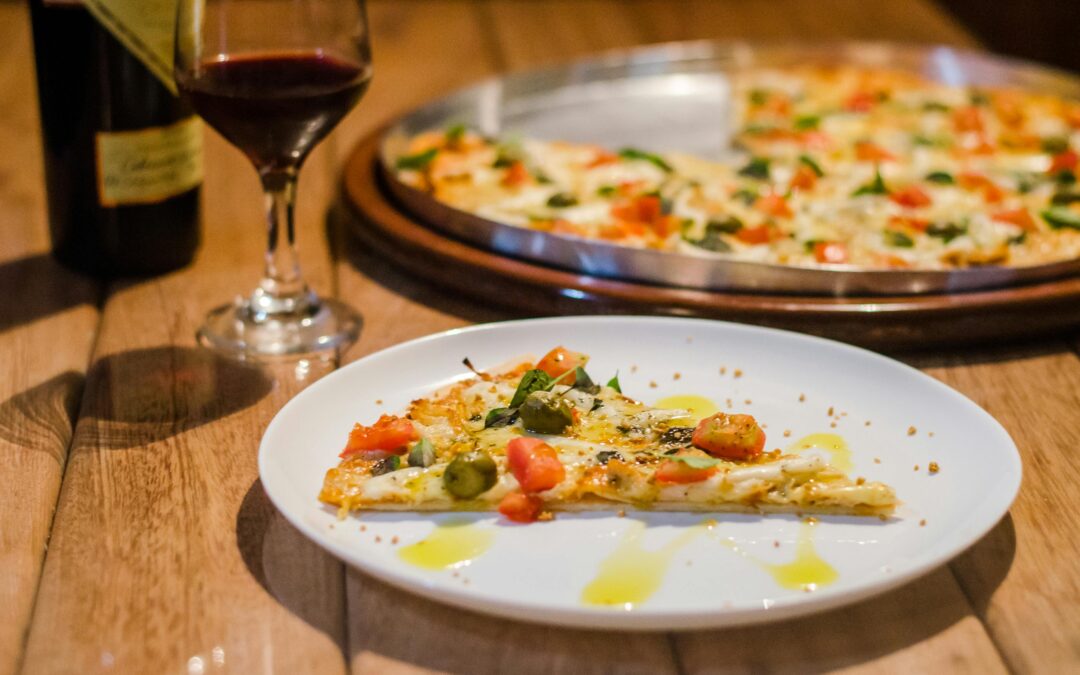A Report From Wine Explorer Diego Samper – Terroir: The Oven Behind the Wine
What I’m about to say might ruffle some feathers.
There are few things in life I enjoy more than a pizza and a Coca-Cola.
Not the fancy kind. I’m not talking about truffle oil and hand-pulled mozzarella. I mean the classic combo—thin crust, bubbling cheese, maybe some pepperoni, and that cold, fizzyness of a Coca Cola with ice to wash it all down. It’s greasy, fast, and hits all the flavors: dough, char, fat, acid, bubbles. For me, it’s all about the bubbles and the dough. A great pairing.
Since moving to Paris—new neighborhood, new surroundings—a new pizza place is a must.
Like a fire extinguisher. Or the closest exit on a plane. You may not need it tonight, but when the moment comes—you’ll want it nearby. Because pizza—unlike wine—doesn’t travel well. I’d say its lifespan is about 15 minutes. After that, it dies a slow, soggy death in the box.
So I’ve been testing places out. Slowly. You don’t want to get this wrong. It’s like picking a barber.
We use the word “pizza” like it means one thing. But really, it falls into three classic camps: Neapolitan, New York, and Chicago. Each one shaped by its environment—its culture, its pace, its oven.
Neapolitan pizza is all speed and softness. Cooked in a 900°F wood-fired oven, the heat blasts up from the stone, puffing the edge and charring the crust in 90 seconds. The ingredients—San Marzano tomatoes, mozzarella di bufala—don’t like to wait. And neither does Naples.
New York pizza bakes slower, in gas ovens around 550°F. The crust gets a little crunch, a little chew. You fold it. You walk with it. It’s pizza for the street.
Chicago deep dish cooks low and slow in a deep pan. Sauce on top, cheese below. You don’t fold it—you dig in with a fork.
Same ingredients. Same idea. But the oven—the terroir—makes all the difference.
That word gets thrown around a lot in wine. Terroir. One of the trickiest concepts to explain. There is no perfect translation in English. It means the total environment that shapes a wine: soil, sun, altitude, weather, even microbes in the air. And yes, the people who make it.
Jancis Robinson, one of the most respected wine writers alive, calls terroir “the total natural environment” of a vineyard. The idea is that wine reflects a place—if you let it.
Here’s how Jancis Robinson defines terroir in detail — a concept that connects geography, climate, and winemaking culture.
To me, terroir is like the oven behind the pizza.
Gas, electric, or wood-fired. Where the heat comes from. How long the crust bakes. That changes everything.
And it’s also who’s running the oven. What ingredients they have. What they’ve learned to do with them.
Same with wine. Terroir includes the land, the climate, the rhythm of ripening—but also the winemaker, the culture, the way things are done.
That’s what tells you if a wine will be bright and tense, or soft and plush.
It’s not just what’s in the grape—it’s what the place and the people do with it.
And like pizza, it’s about expectation.
Say “pizza” to a New Yorker, a Neapolitan, or a Chicagoan—you’ll get three very different pictures.
Same with wine. Say “Cabernet,” and I’ll ask: Where from? France, California, Argentina… all the same grape, all completely different wines.
A Cabernet from the Médoc is nothing like one from Napa. And a Malbec from Salta—with its high altitude, dry air, intense sun, and lack of rainfall—is in another world entirely from a soft, warm-climate version grown elsewhere.
That’s what terroir gives you—not a rulebook, but a hint. A way to taste the place. A nudge in the right direction.
So the next time someone tries to explain the terroir of your wine—you’ll know what they’re talking about.
And if you’re still unsure about pairings? Go with your gut.
The internet’s favorite choice is Chianti. I say Champagne. But again… what pizza are we talking about?
Anyway—enjoy your pizza. Send me your favorite pairing.
I’ll keep looking for a good spot near my place in Paris. And wines for our club.
There are more bottles and pizzerias in the world than I’ll ever get to… But that’s the fun of it.
You find them one at a time. Slice by slice. Glass by glass.
Cheers,
Diego Samper
Wine Explorer
P.S. If you’re curious about the wines I’ve been tasting (and pairing with pizza), you can explore our wine clubs here. It’s where we share bottles that truly reflect their place—no soggy slices, promise.

